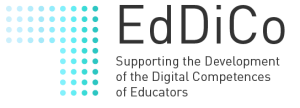1er Curso TeachUP: Evaluación formativa en las aulas, ¿están mis alumnos aprendiendo?
Explorar la importancia y los retos en la definición de la evaluación formativa en situaciones prácticas
Explorar la importancia y los retos en la definición de la evaluación formativa en situaciones prácticas
Was kannst du in diesem Kurs lernen?
Was kannst du in diesem Kurs lernen?
Was kannst du in diesem Kurs lernen?
After completing this course you will be able to:
After completing this course you will be able to:
Unser Kurs zu den Grundlagen der Web-Technologie beschäftigt sich zunächst mit den wichtigsten Basistechnologien: URI, HTTP, HTML, CSS und XML.
Sollte sich das kryptisch für Sie anhören, seien Sie versichert, dass Sie sehr bald verstehen werden, was es damit auf sich hat. Wir werden dann den Fokus auf Web Services und die Programmierung im Web legen und dabei auch versuchen, Interessierten grundlegende praktische Kenntnisse zu vermitteln.
Schließlich werden wir uns auch mit dem Thema “Suchmaschinen” beschäftigen und wie diese Anwendungen, die aus unserem Internet-Alltag nicht mehr wegzudenken sind, eigentlich funktionieren.
Der Kurs schließt mit einem Blick auf aktuelle Themen wie das Social Web, das Service Web und das Semantic Web.
In this T-shaped course you will be introduced to computational learning theory and get a glimpse of other research towards a theory of artificial intelligence. “T-shaped” means that on the one hand we will concentrate on different learning models in depth, on the other hand we want to give a broad overview and invite experts from other AI projects to show what else can be done in AI and theory of computer science research.
The focus is on learning from informant, a formal model for binary classification, for example by a support vector machine or perceptron. Illustrating examples are linear separators and other uniformly decidable sets of formal languages. Due to the learning by enumeration technique by Gold the learning process can be assumed consistent when full-information is available. After the proofs of the latter observations, the model is adjusted towards the setting of deep learning.
We first investigate the learnability of the set of half-spaces by this incremental learners and then show that they have less learning power than the full-information variant by a fundamental proof technique due to Blum and Blum. Finally, we will apply this technique to also separate consistency. Beyond these models, we present and visualize applied binary classifiers and you will get concentrated insights into other approaches towards a theory of AI and important topics in theoretical computer science.
These include evolutionary algorithms, fair clustering, game theory, low-dimensional embeddings, stable matchings, 3-satisfiability and submodular optimization. Further, more models in Gold-Style computational learning theory are being discussed by experts in the second week.
The clean-IT Forum will shed light on all of the aforementioned steps and present clean-IT solutions from research and application in very different domains of digital technologies by supporters of the clean-IT initiative: – Digitalization and Climate – Energy-efficient Algorithms and Databases – Energy-efficient Data Centers – Clean AI
Supporting the Development and Certification of the Digital Competences of Educators – EdDiCo
Project Ref: 2019-1-DE01-KA203-005070
This project has been funded with support from the European Commission. This website reflects the views only of the authors, and the Commission cannot be held responsible for any use which may be made of the information contained therein.

